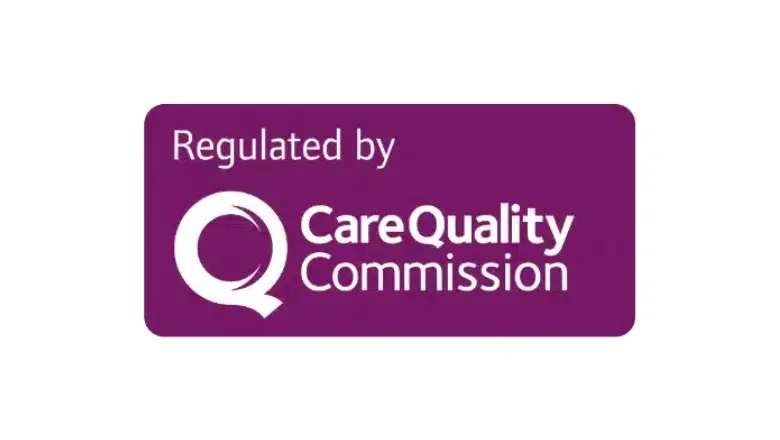Vaginal atrophy, also known as atrophic vaginitis, is a condition that frequently occurs alongside menopause. It is typified by the thinning, drying, and inflammation of the vaginal walls, primarily due to the natural decline in estrogen levels that happens during and after menopause. However, this condition is not exclusive to menopausal women; it can affect women of all ages when their oestrogen levels decrease due to various reasons.
It’s essential to remember that no one needs to endure the detrimental effects of this condition, which can disrupt sleep, impact sexual health, and undermine overall happiness and confidence. If you’re in London and grappling with the discomfort and pain associated with vaginal atrophy, there are treatment options available. You have the power to take control of this condition and improve your quality of life. Let’s delve deeper into everything you need to know about living with and addressing the symptoms of vaginal atrophy.
Diagnosis of Vaginal Atrophy
How can you determine if the symptoms you’re encountering are a result of vaginal atrophy? It’s quite common for people to mistakenly attribute the symptoms of vaginal atrophy to those of a yeast infection. However, treatments targeted towards yeast infections won’t be effective against vaginal atrophy as the latter is a consequence of diminished oestrogen levels, not a fungal infection. It’s always crucial to consult a specialist to rule out a yeast infection before concluding that your symptoms are indicative of vaginal atrophy. Here are the common symptoms associated with vaginal atrophy:
- Dryness of the vagina.
- A burning sensation in the vagina.
- Burning sensation during urination.
- An urgent need to urinate.
- Alterations in vaginal discharge.
- Genital itching.
- Recurring urinary tract infections (UTIs).
- Light bleeding following intercourse.
- Discomfort or pain during sexual intercourse.
- Reduced vaginal lubrication during sexual activities.
- Tightening of the vaginal canal.
You don’t necessarily have to experience all these symptoms to be diagnosed with vaginal atrophy. In numerous instances, women may only manifest symptoms such as burning, dryness, and itching. A thorough pelvic examination is typically required to definitively diagnose vaginal atrophy.
RELATED: Shrinking Labia – Causes and Treatments
During this examination, your gynaecologist will be on the lookout for signs such as swelling, redness, vulvar lesions, lacerations near the vaginal opening, sparse pubic hair, narrowing of the vagina, and other symptoms indicative of declining oestrogen levels. Additionally, urine and fluid analysis may also be employed in the diagnostic process.
Vaginal Atrophy Treatment
Contrary to what many women believe, vaginal atrophy is not an inevitable consequence of ageing that must be endured without treatment. The assumption that nothing can be done to alleviate the effects of declining oestrogen levels often prevents women from seeking help from their General Practitioner (GP). In reality, a variety of treatment options exist to restore comfort and functionality.
It’s crucial to consult your GP or a specialist as soon as you observe symptoms of vaginal atrophy. Early treatment can halt the progression of the condition, preventing it from worsening. With decreasing oestrogen levels, vaginal dryness typically increases, which implies your condition could progressively deteriorate over time. In severe cases, atrophy can cause dramatic narrowing of the vaginal opening. Addressing atrophy once significant symptoms have manifested can be much more challenging than treating it in its early stages. Let’s explore the three most common treatment approaches for vaginal atrophy.
Lifestyle Modifications
Modifications to one’s lifestyle should not be overlooked when considering treatment options for vaginal atrophy. There are numerous measures women can take to alleviate the symptoms of vaginal atrophy without resorting to medical intervention. Here are some suggestions:
- Giving up smoking can contribute to resolving vaginal atrophy. Smoking cigarettes restricts blood circulation to the vagina. Moreover, smoking diminishes the effectiveness of the body’s oestrogen levels.
- Regular physical exercise can be beneficial in maintaining high blood flow to the genital area.
- Regularly performing Kegel exercises can aid in preventing the thinning and shrinking of vaginal tissue. Kegels can be particularly beneficial for women experiencing urinary symptoms linked with this condition. These straightforward exercises involve the repeated tightening and loosening of pelvic floor muscles.
- Engaging in frequent sexual activity can help to prevent vaginal atrophy. Regular sexual activity promotes the health of vaginal tissue by enhancing blood flow to the vagina.
Hormone therapy
Hormone therapy is another widely used treatment option for vaginal atrophy. This approach primarily involves the use of oestrogen, a hormone that plays a vital role in maintaining the health of vaginal tissues. When oestrogen levels drop, as seen during menopause or due to other health conditions, the vaginal walls can become thin, dry, and inflamed. Hormone therapy seeks to counteract these effects by supplementing the body’s natural oestrogen levels.
There are several types of hormone therapy available for the treatment of vaginal atrophy:
- Topical Oestrogen Therapy: This involves applying oestrogen directly to the vaginal area. Topical oestrogen comes in several forms, such as creams, tablets, or rings that are inserted into the vagina. This method allows for a more localised treatment, concentrating the hormone where it’s most needed, and minimises the amount of oestrogen that enters the bloodstream.
- Oral Oestrogen Therapy: In this treatment, oestrogen is taken by mouth. This method can relieve many symptoms of menopause, including vaginal dryness and irritation. However, oral oestrogen therapy often affects the entire body, not just the vagina, and may carry more risks compared to topical oestrogen therapy.
- Oestrogen/Progesterone Therapy: Sometimes, a combination of oestrogen and progesterone is used. Progesterone is added to protect the uterus in women who have not had a hysterectomy. Using oestrogen alone can increase the risk of developing endometrial cancer (cancer of the uterine lining). Adding progesterone reduces this risk.
- Ospemifene Therapy: Ospemifene is a selective estrogen receptor modulator (SERM) that acts like oestrogen on the vaginal lining, alleviating vaginal dryness and irritation. It’s taken orally and can be an option for women who cannot use oestrogen therapy.
Before initiating hormone therapy, it is essential to discuss with our specialists the potential benefits, risks, and side effects associated with each type of treatment. This will ensure the most appropriate and effective treatment plan is chosen for your specific needs.
Laser treatment
Laser treatment is a novel and increasingly popular option for managing vaginal atrophy. Non-invasive and relatively painless, it presents a promising alternative for women who are unable or unwilling to use hormone therapy.
The procedure involves the use of a special laser that emits pulses of thermal energy to the vaginal tissue. This energy triggers a process called neocollagenesis, where the body produces new collagen in response to the heat. Collagen is a crucial protein that helps maintain the structure and elasticity of tissues, including those in the vagina.
Laser treatments for vaginal atrophy, like RenovaLase, work by revitalising the vaginal tissue. The laser energy gently stimulates the vaginal walls, promoting collagen and elastin production. This process improves the thickness and elasticity of the vaginal lining, relieving symptoms such as dryness, burning, and discomfort during sexual intercourse.
While laser treatment can be highly effective, it may not be suitable for everyone. As with any medical procedure, there can be potential risks and side effects. These may include temporary discomfort or swelling, and there’s always a small risk of infection or scarring.
For these reasons, it’s vital to have a thorough consultation with a specialist at Centre for Surgery before deciding on any treatment for vaginal atrophy. They can provide a complete assessment of your condition, discuss the most appropriate options, and guide you through the process to ensure the best possible outcome.
Schedule a consultation at Centre for Surgery
At Centre for Surgery, we understand the discomfort and distress vaginal atrophy can cause. But it doesn’t have to be a condition you simply endure. Our gynaecology clinic, located in the heart of London on Baker Street, is committed to helping you reclaim your quality of life with effective treatment options tailored to your individual needs.
Our team of highly qualified gynaecologists boasts over two decades of professional experience, with a particular focus on innovative laser treatments for vaginal atrophy. We believe that every woman deserves to feel comfortable and confident, which is why we aim to provide the best possible care and support through this journey.
Don’t let vaginal atrophy stand in the way of your happiness and wellbeing. Reach out to us at Centre for Surgery and take the first step towards relief. We’re ready to listen, understand, and work with you to create a personalised treatment plan designed to alleviate your discomfort and improve your quality of life.
Contact us today on 0207 993 4849 to schedule a consultation. It’s time to prioritise your health, comfort, and peace of mind. Take the next step with Centre for Surgery – we’re here to help.










